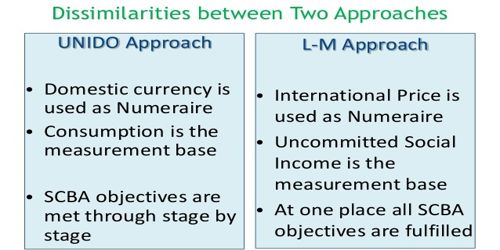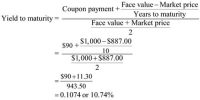Similarities and differences between the UNIDO approach and L-M approach
UNIDO Approach: This approach is mainly based on the publication of UNIDO (United Nation Industrial Development Organization) named Guide to Practical Project Appraisal in 1978.
L-M Approach: L.M.D Little and J.A.Mirlees have developed this approach for the analysis of Social Cost-Benefit in Manuol of Industrial Project Analysis in Developing Countries and Project Appraisal and Planning for Developing Countries.
Little-Mirriees and UNIDO similarities –
- The calculation of shadow price particularly for foreign exchange saving and unskilled labor is same in both methods.
- Both methods consider factors of equity.
- Both methods use DCF (Discounted Cash Flow) methods.
Little-Mirrlees and UNIDO dissimilarities
- UNIDO method also emphasis calculation of financial profitability of market prices along with SCBA but this is not so done in case of Little-Mirrlces method.
- Little-Mirrlees method measures cost and benefit in terms of international currency that is in border price or world price in $. UNIDO approach measure costs and benefits in terms of domestic currency.
- The numeracies in case of Little-Mirrlees approach measures cost and benefit in terms of uncommitted social income. On the other hand in UNIDO method it measures the same in terms of domestic consumption.
- UNIDO approach focuses efficiency, saving and redistribution of income stage by stage while Little-Mirrlees approach considers the same in totality.















